What You Should Know About Improvised Explosive Devices (IED’S)
An IED can be almost anything with any type of material and initiator. It is a "homemade" device that is designed to cause death or injury by using explosives alone or in combination with toxic chemicals, biological toxins, or radiological material. IEDs can be produced in varying sizes, functioning methods, containers, and delivery methods. IEDs can utilise commercial or military explosives, homemade explosives, or military ordnance and ordnance components. IEDs are relatively simple to make with a little research, time and training. After all, how hard is it to get batteries, cell phones and radios? Detonators and explosives such as C-4, Semtex and dynamite can be found at construction sites and oil rigs. They also may be stolen, purchased legally or cooked up at home or in a makeshift lab. They are unique in nature because the IED builder has had to improvise with the materials at hand. Designed to defeat a specific target or type of target, they generally become more difficult to detect and protect against as they become more sophisticated. An IED explosion causes damage to vehicles and property primarily through the blast wave, heat and fires.
IEDs fall into three types of categories:
- Package Type IED
- Vehicle-Borne IEDs (VBIEDs)
- Suicide Bomb IED
Though they can vary widely in shape and form, IEDs share a common set of components and consist of the following:
- A switch/trigger;
- An initiator (fuse);
- Main charge (explosive fill);
- A power source for the switch/trigger; and
- A container
Once made, people tend to use one of three methods for delivering their weapon. Often they'll conceal the device in a package that may be in plain sight, hidden or buried. Insurgents have even hidden IEDs in animal carcasses alongside military convoy routes. They may also place the IED in a vehicle's trunk (vehicle-borne IED or VBIED). A driver may park the vehicle alongside a convoy route. A remote watcher can then detonate the VBIED from a safe distance. The last delivery method relies on a suicide bomber. The suicide bomber may drive a VBIED into the target area and explode it or strap the device on his or her body, walk into the intended target area and explode it.
Examples of Explosives
|
Material |
Common Uses |
Common Form |
Known IED use |
|---|---|---|---|
|
Ammonium nitrate and Fuel Oil (ANFO) |
Mining & Blasting |
Solid |
Solid Oklahoma City bombing |
|
Triacetone Triperoxide (TATP) |
No common uses; mixed from other materials |
Crystalline solid |
2005 bombings in London |
|
Semtex, C-4 |
Primarily military |
Plastic solid
|
Irish Republican Army bombings |
|
Ethylene glycol dinitrate (EGDN) |
Component of low freezing dynamite |
Liquid |
Los Angeles airport, 1999 |
|
Urea nitrate |
Fertilizer |
Solid |
World Trade Center 1993 |
|
Smokeless powder |
Ammunition |
Solid |
Olympic Park bombings |
Explosive Chemicals
|
Chemical |
Common Use |
|---|---|
|
Acetone |
Solvents, Nail Polish remover |
|
Hydrogen Peroxide |
Hair remover, Pool sanitizers, Cleaning Products |
|
Ammonium Nitrate |
Fertilizer |
|
Benzene |
Solvents, Gasoline |
|
MEKP |
Curing & Bonding Agents |
|
Urea |
Fertilizer |
|
Hexamine |
Fuel Tablets |
|
Strong Acids |
Batteries, Cleaning Products |
- Both acetone and hydrogen peroxide are components of triacetone triperoxide (TATP), which was used in the 2005 London mass transit bombing. Acetone is found in solvents and nail polish removers, and hydrogen peroxide is found in pool sanitizers and hair dyes. These two chemicals brought simultaneously may indicate that an individual is constructing TATP.
- Both ammonium nitrate and urea are used as fertilizers and, when combined with other chemicals – among them, benzene – form a secondary high explosive.
- Ammonium nitrate fuel oil (ANFO) was used in the 1995 Oklahoma City bombing, whereas urea nitrate was used in the 1993 World Trade Center bombing.
- MEKP is a liquid explosive containing hydrogen peroxide and is used as a curing and bonding agent.
- Hexamine, found in fuel tablets, serves as a component of hexamethylene triperoxide diamine (HMTD), another highly unstable peroxide-based HME.
- Strong acids found in batteries and cleaning products serve as the third ingredient of both TATP and MEKP, among other explosive
Images of IED's
Be Vigilant!
References/Sources: News & Terrorism: Communication in a Crisis, US Department of Homeland Security, National Academies


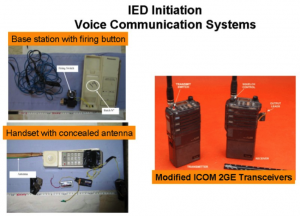
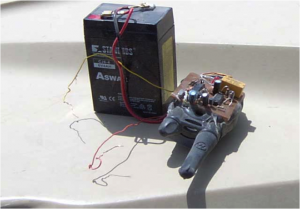
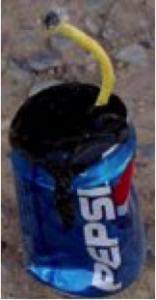
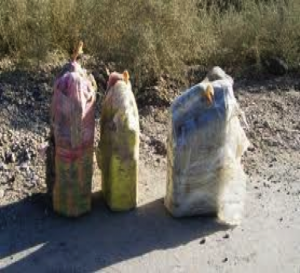

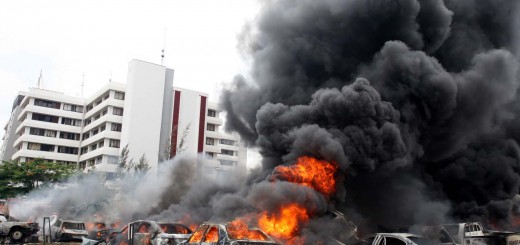

Recent Comments